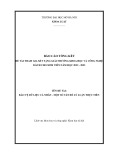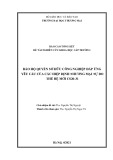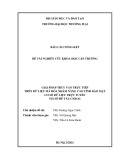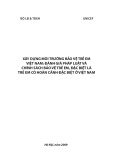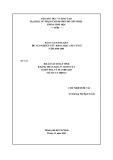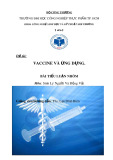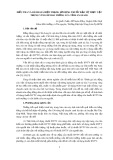
Differential binding of human immunoagents and
Herceptin to the ErbB2 receptor
Fulvia Troise
1,
*, Valeria Cafaro
1,
*, Concetta Giancola
2
, Giuseppe D’Alessio
1
and
Claudia De Lorenzo
1
1 Dipartimento di Biologia Strutturale e Funzionale, Universita
`di Napoli Federico II, Italy
2 Dipartimento di Chimica, Universita
`di Napoli Federico II, Italy
ErbB2 (HER2 ⁄neu) is a proto-oncogene of the erbB
family of tyrosine kinase receptors [1]. It encodes a
185 kDa transmembrane protein, which comprises an
extracellular domain (ECD) and an intracellular tyro-
sine kinase activity. Although no natural ligand has
been identified for this receptor, it has been ascer-
tained that its overexpression is associated with
various carcinomas, in particular with human breast
cancer [2]. As ErbB2 overexpression is involved in the
progression of the malignancy, and is a sign of a poor
prognosis, ErbB2 is a valid target of therapeutic inter-
vention.
However, when ErbB2 is overexpressed, not all of
the ErbB2-ECD protein is embedded in the membrane
of malignant cells; a fraction of ErbB2-ECD is proteo-
lytically removed from the receptor [3] and shed as a
soluble protein in the sera of breast cancer patients [4].
Herceptin [5], a humanized anti-ErbB2 IgG1, has
been proven to be an essential tool in the immunother-
apy of breast carcinoma. However, some ErbB2-posi-
Keywords
binding affinity; ErbB2; herceptin;
immunoRNase; immunotherapy
Correspondence
C. De Lorenzo, Dipartimento di Biologia
Strutturale e Funzionale, Universita
`di Napoli
Federico II, Via Cinthia, 80126 Naples, Italy
Fax: +39081679159
Tel: +39081679158
E-mail: cladelor@unina.it
*These authors contributed equally to this
work
(Received 9 June 2008, revised 29 July
2008, accepted 1 August 2008)
doi:10.1111/j.1742-4658.2008.06625.x
Overexpression of the ErbB2 receptor is associated with the progression of
breast cancer, and is a sign of a poor prognosis. Herceptin, a humanized
antibody directed to the ErbB2 receptor, has been proven to be effective in
the immunotherapy of breast cancer. However, it can result in cardiotoxicity,
and a large fraction of breast cancer patients are resistant to Herceptin treat-
ment. We have engineered three novel, fully human, anti-ErbB2 immuno-
agents: Erbicin, a human single-chain antibody fragment; ERB-hRNase, a
human immunoRNase composed of Erbicin fused to a human RNase;
ERB-hcAb, a human ‘compact’ antibody in which two Erbicin molecules
are fused to the Fc fragment of a human IgG1. Both ERB-hRNase and
ERB-hcAb strongly inhibit the growth of ErbB2-positive cells in vivo. The
interactions of the Erbicin-derived immunoagents and Herceptin with the
extracellular domain of ErbB2 (ErbB2-ECD) were investigated for the first
time by three different methods. Erbicin-derived immunoagents bind soluble
extracellular domain with a lower affinity than that measured for the native
antigen on tumour cells. Herceptin, by contrast, shows a higher affinity for
soluble ErbB2-ECD. Accordingly, ErbB2-ECD abolished the in vitro anti-
tumour activity of Herceptin, with no effect on that of Erbicin-derived immu-
noagents. These results suggest that the fraction of immunoagent neutralized
by free extracellular domain shed into the bloodstream is much higher for
Herceptin than for Erbicin-derived immunoagents, which therefore may be
used at lower therapeutic doses than those employed for Herceptin.
Abbreviations
EDIA, Erbicin-derived immunoagent; ErbB2-ECD, extracellular domain of ErbB2 receptor; ERB-hcAb, human compact antibody against ErbB2
receptor; ERB-hRNase, human anti-ErbB2 immunoRNase with Erbicin fused to human pancreatic RNase; ITC, isothermal titration
calorimetry; RU, response unit; scFv, single-chain antibody fragment; SPR, surface plasmon resonance.
FEBS Journal 275 (2008) 4967–4979 ª2008 The Authors Journal compilation ª2008 FEBS 4967





